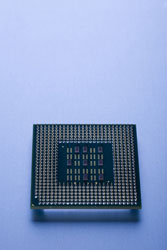Complementary to CMOS nanosensors
The possibility of combining the well known and well established Complementary metal-oxide-semiconductor (CMOS) circuitry with nanotechnology processes has been explored and proven feasible during the NANOMASS I project. Namely, it was shown that novel nanolithographic techniques could be combined with standard CMOS technology. Additionally, a mass detector based on an array of nanometre-scale silicon cantilevers was fabricated. Such a compact and sensitive environmental or biochemical sensor was further optimised in terms of fabrication, performance and functionality under the auspices of NANOMASS II project. Of critical importance to the functionality of such sensor is the electromechanical behaviour of the resonating cantilever excited electrostatically by a parallel driver electrode. Elaborate software codes were developed to model this behaviour. Four different approaches aimed to describe the capacitive current signal provided by the cantilever-driver system. This current signal is the result of the cantilever's oscillation from an AC voltage excitation and a DC voltage application to the driver-cantilever system. In the simplest approach, the complex underlying system can be modeled with just a resonating equivalent RLC (Resistor Inductor Capacitor) circuit in parallel with a capacitor. The model is valid for stiff cantilevers that consequently oscillate with small amplitudes. The non-linear real curved cantilever deflection and parallel plate approximation models are suitable for descriptions of capacitive current signals of soft cantilevers and large amplitudes of oscillation. These two approaches along with the non-linear linear cantilever deflection approximation model, can also provide information on mechanical magnitudes as in cantilever deflection. The above three models are also capable of simulating the behaviour of the parallel driver electrode, i.e. the driver-cantilever transducer, when coupled with an electronic circuitry. More functionality tests will be performed bringing mass sensors with a mass resolution of 10[-19]gr in vacuum, and a spatial sensitivity of less than 100nm closer to industrial applications. For more information click at: http://einstein.uab.es/_c_nanomass/







